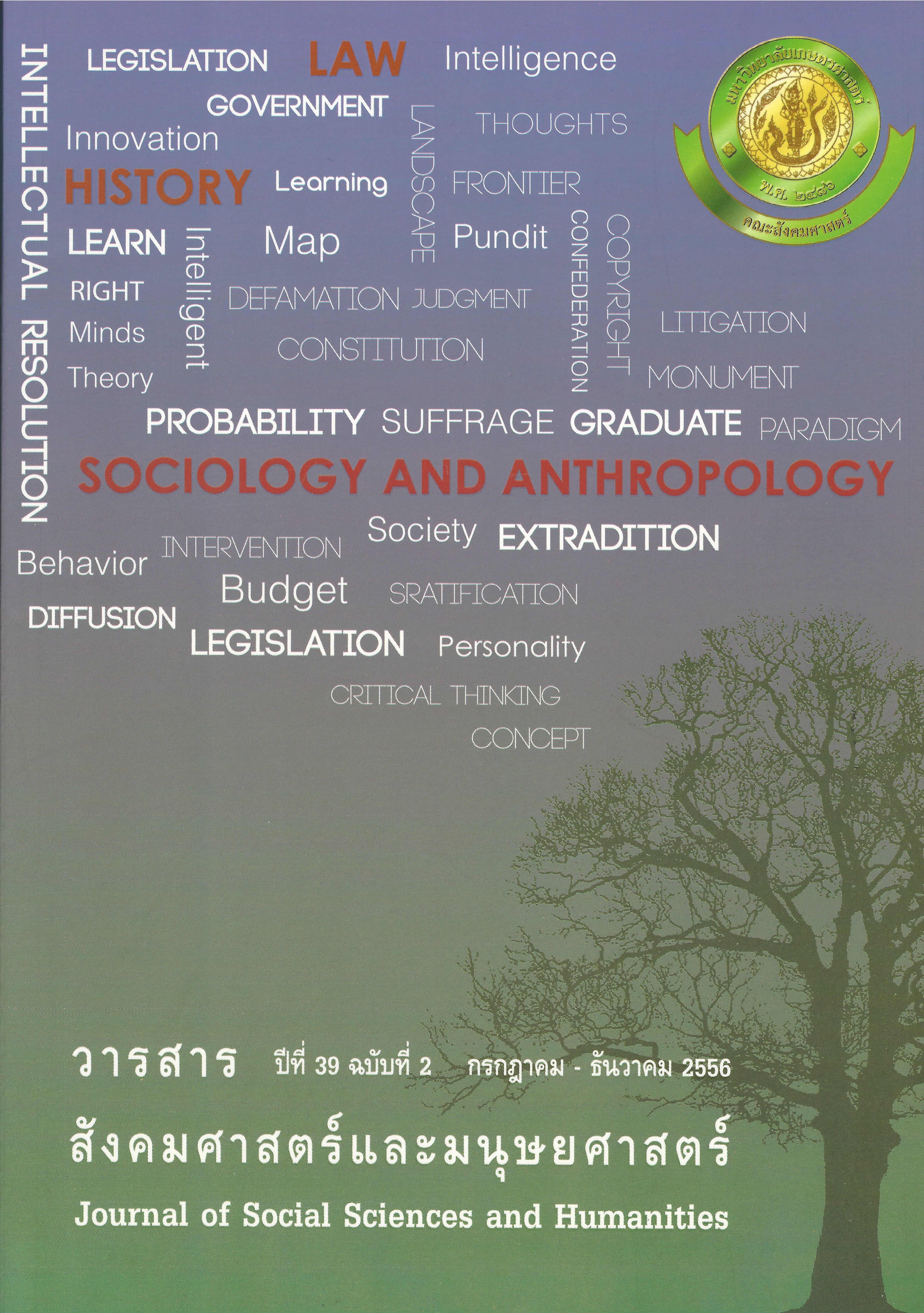การมีส่วนร่วมของประชาชนในการบริหารจัดการกองทุนหมู่บ้านและชุมชนเมือง ตำบลลาดสวาย อำเภอลำลูกกา จังหวัดปทุมธานี
Main Article Content
บทคัดย่อ
การวิจัยครั้งนี้มีวัตถุประสงค์เพื่อศึกษาระดับการมีส่วนร่วมของประชาชนในการบริหารจัดการกองทุนหมู่บ้านและชุมชนเมือง ตำบลลาดสวาย อำเภอลำลูกกา จังหวัดปทุมธานี และเพื่อเปรียบเทียบระดับการมีส่วนร่วมของประชาชนในการบริหารจัดการกองทุนหมู่บ้านและชุมชนเมืองตามปัจจัยส่วนบุคคล กลุ่มตัวอย่างคือ ประชากรซึ่งเป็นสมาชิกกองทุนหมู่บ้านช่วง พ.ศ. 2554 จำนวน 171 คน เก็บรวบรวมข้อมูลโดยใช้แบบสอบถาม การสัมภาษณ์ และการสังเกตการณ์ประกอบ วิเคราะห์ข้อมูลโดยใช้โปรแกรมสำเร็จรูป สถิติที่ใช้ในการวิเคราะห์ข้อมูลคือ ร้อยละ ค่าเฉลี่ย ส่วนเบี่ยงเบนมาตรฐาน การทดสอบแบบที และการวิเคราะห์ความแปรปรวน กำหนดค่านัยสำคัญทางสถิติที่ระดับ .05 ผลการวิจัยพบว่า สมาชิกกองทุนมีส่วนส่วนร่วมในการบริหารจัดการกองทุนหมู่บ้านในระดับมาก ด้านการรับผลประโยชน์ ด้านการดำเนินกิจกรรม ด้านการประเมินผล และด้านการตัดสินใจ ตามลำดับ จากการทดสอบสมมติฐานพบว่า สมาชิกกองทุนหมู่บ้านที่มีเพศ สถานภาพสมรส และอาชีพหลักแตกต่างกัน มีส่วนร่วมในการบริหารจัดการกองทุนหมู่บ้านแตกต่างกันอย่างมีนัยสำคัญทางสถิติที่ระดับ .05 ส่วนสมาชิกกองทุนหมู่บ้านที่มี อายุ ระดับการศึกษา รายได้ การกู้ยืม ต่างกันมีส่วนร่วมในการบริหารจัดการกองทุนหมู่บ้านไม่แตกต่างกัน
People’s Participation on Village and Urban Fund Management at Ladsawai Subdistrict, Lum Luk Ka District, Pathum Thani Province
The objectives of this research were to study the level of people’s participation in village and urban fund management at Ladsawai Subdistrict, Lam Luk Ka District, Pathum Thani Province and to compare the level of people’s participation in village and urban fund management according to personal factors. The sample in this study consisted of one hundred and seventy-one members of the village and urban fund in 2011. The data were collected by applying the questionnaires, interviews, and observation. The statistics included the percentages, the arithmetic mean, the standard deviation, the t-test, and the analysis of variance. The level of statistical significance was set at 0.05. Research results indicated high level of people’s participation in village and urban fund management. The highest dimension of participation was in benefits, followed by operation, evaluation, and decision making, respectively. The hypothesis testing found that personal factors such as gender, marital status, and occupation led to differences in people participation at the statistically significant level of 0.05. However, the other factors such as ages, education levels, income, and loan were not statistically significant in people participation.

